US Army embedded, classroom, and portable UAS simulators
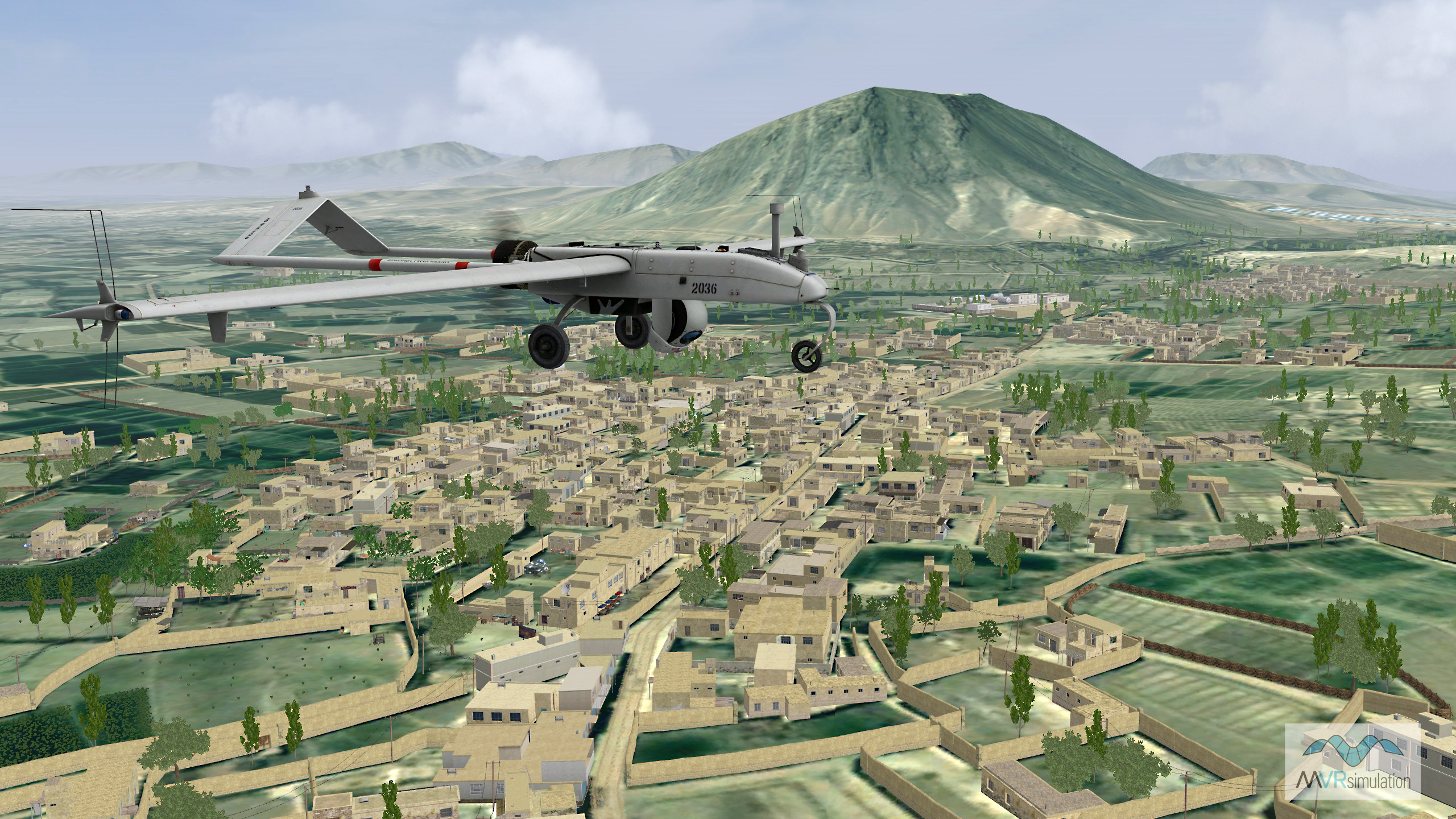
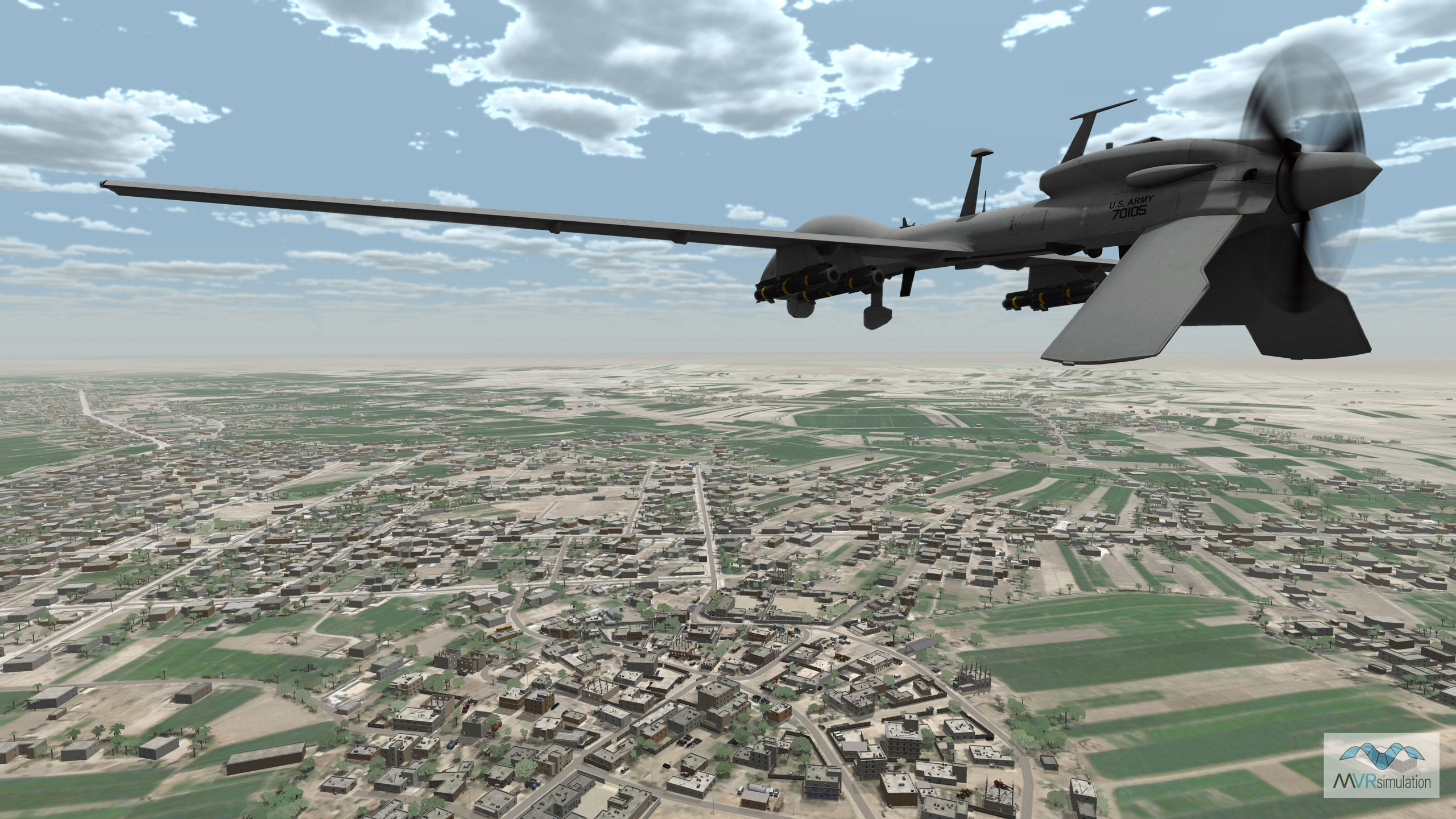
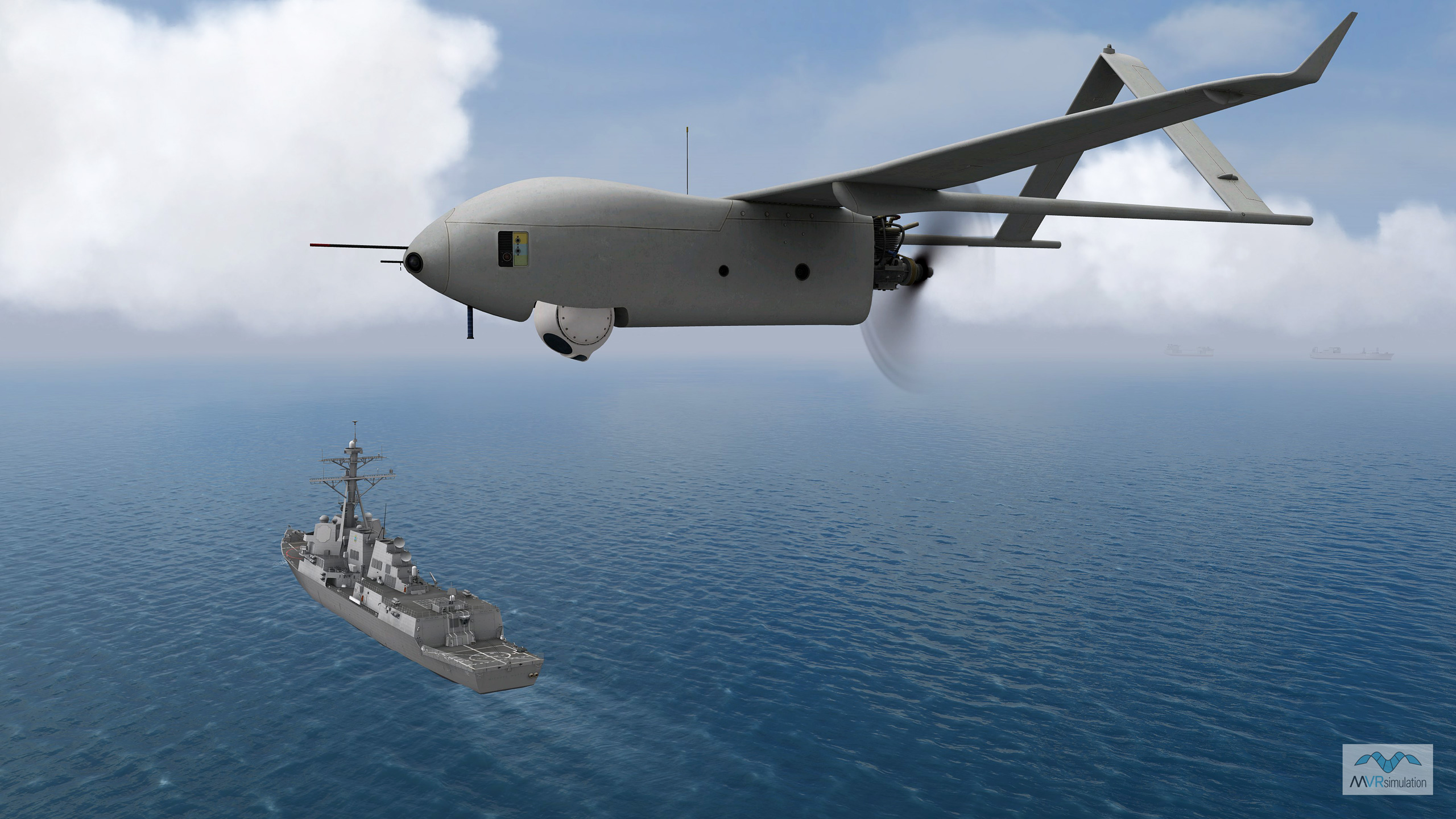
The U.S. Army uses MVRsimulation's Virtual Reality Scene Generator (VRSG) in its Shadow Crew Trainer, and in Gray Eagle, Aerosonde, and Hunter trainers in portable, classroom, and embedded configurations. VRSG embedded in the Army’s Universal Ground Control Station (UGCS) Embedded Trainer for training operators of the Shadow, Gray Eagle, and Hunter UASs. VRSG is also used in high-fidelity classroom Universal Mission Simulators (UMS) and portable Institutional Mission Simulators. In addition to a portable classroom, each simulation setup replicates a full GCS shelter with one-seat, two-seat, and three-seat configurations. VRSG is used primarily through the U.S. Army's Multiple Unified Simulation Environment (MUSE) simulation system, where VRSG provides simulated video feeds for various intelligence gathering platforms. The Gray Eagle and Shadow trainers are the only DOS accredited trainers in the Army that allow for minimums to be logged to maintain qualifications.
With VRSG generating simulated UAV full motion video in ground control stations and in manned aircraft simulators, UAS operators, pilots, and JTAC trainees can achieve fully correlated HD H.264 simulated sensor video with accurate KLV metadata that replicates the actual sensor payload imagery of ISR assets during manned-unmanned teaming (MUM-T) and other distributed training exercises.
A key feature of VRSG is the ability to stream real-time HD-quality simulated video with KLV metadata using the H.264 protocol, which is indiscernible in composition from actual UAV video feed. This means that in the UGCS when UAS operators/trainees are not flying an actual UAS, they can fly a simulated UAS using the same hardware they use to operate the real system, using the JTC/SIL MUSE air vehicle and data link simulation software and VRSG.
VRSG provides the desktop and embedded 3D synthetic payload visualization system for training UAS operators on ground control stations such as the U.S. Army’s UGCS. The Army’s UAS Universal Mission Simulator (UMS) is a Training Aids, Devices, Simulators, and Simulations (TADSS desktop training suite) system that provides training for the operation of the Army’s UGCS for the MQ-5B Hunter, RQ-7 Shadow, Aerosonde, and MQ-1C Gray Eagle platforms in a classroom or portable environment.
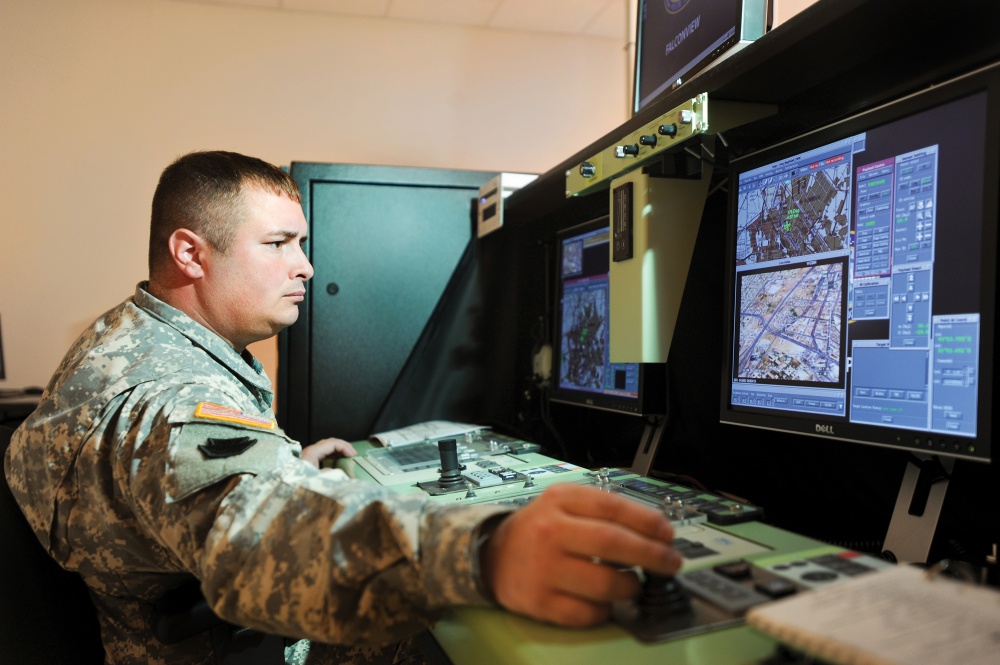
Pennsylvania Army National Guard Sgt. 1st Class Robert Frey, unmanned aerial systems manager, pilots an RQ-7B Shadow aircraft on the Shadow Crew Trainer at Fort Indiantown Gap, PA. Shadow crews use the SCT, which includes MVRsimulation visuals, to gain flight time and proficiency before operating aircraft in the field. (Photo: U.S. Army, Staff Sgt. David Strayer.)
The UMS enables UAS operators to conduct training as part of their qualification training and follow-on continuation training to maintain proficiency and currency in all required operator tasks. The system uses the MUSE system with VRSG to stimulate the tactical Vehicle Control software (VCS) to simulate the following UGCS functions: air vehicle control, payload control, weapons control, communications, send and receive video data, and mission planning. The simulator incorporates multifunctional software approaches to provide UAS operators with a high-fidelity training experience for individual, crew, and collective training. In a classroom setting such as at the Army’s UAS Training Center at Fort Huachuca, AZ, the simulators are full-size mockups of the actual ground control stations from which UAVs are operated in the field.
VRSG is embedded directly in the UGCS, which makes a smooth transition for training in a shelter in the field which soldiers can use to maintain flight time requirements and currency. The UGCS is a NATO STANAG 4586-compliant command-and-control platform that incorporates the Army’s Tactical Common Data Link (TCDL) for robust bandwidth and data security, and is designed to command and control multiple joint services UASs simultaneously. The TCDL, which sends secure data and streaming video from reconnaissance airborne platforms to ground stations, transmits radar, imagery, video, and other sensor information.
Since 2002, the U.S. Army National Guard has purchased VRSG licenses for ongoing fielding in its embedded Shadow Crew Trainer (SCT). These licenses support embedded trainers in Shadow TUAS, Aerosonde, Hunter, and Gray Eagle UAS platforms, which are used by both Army and Army National Guard units. The SCT is a mission-level fully enclosed mobile classroom environment training device that enables users to train on their specific roles, as well as team-level communication and mission rehearsal. The SCT can train up to five students simultaneously in an integrated mode. Simple graphical user interfaces mimic the actual equipment. Trainees can log SCT hours as flight hours toward their overall requirements for Shadow UAS training. Each TUAS system is comprised of three air vehicles, two ground control stations, two ground data terminals, a launcher, a tactical automatic landing system, and an aerial vehicle transport. The GCS is a critical component of the TUAS system. In normal operation, the GCS is used to control the flight of the UAS and receive its telemetry. When the system operators are not flying the actual UAS, they can fly a simulated UAS using the same hardware using the JTC/SIL MUSE air vehicle and data link simulation software and VRSG.
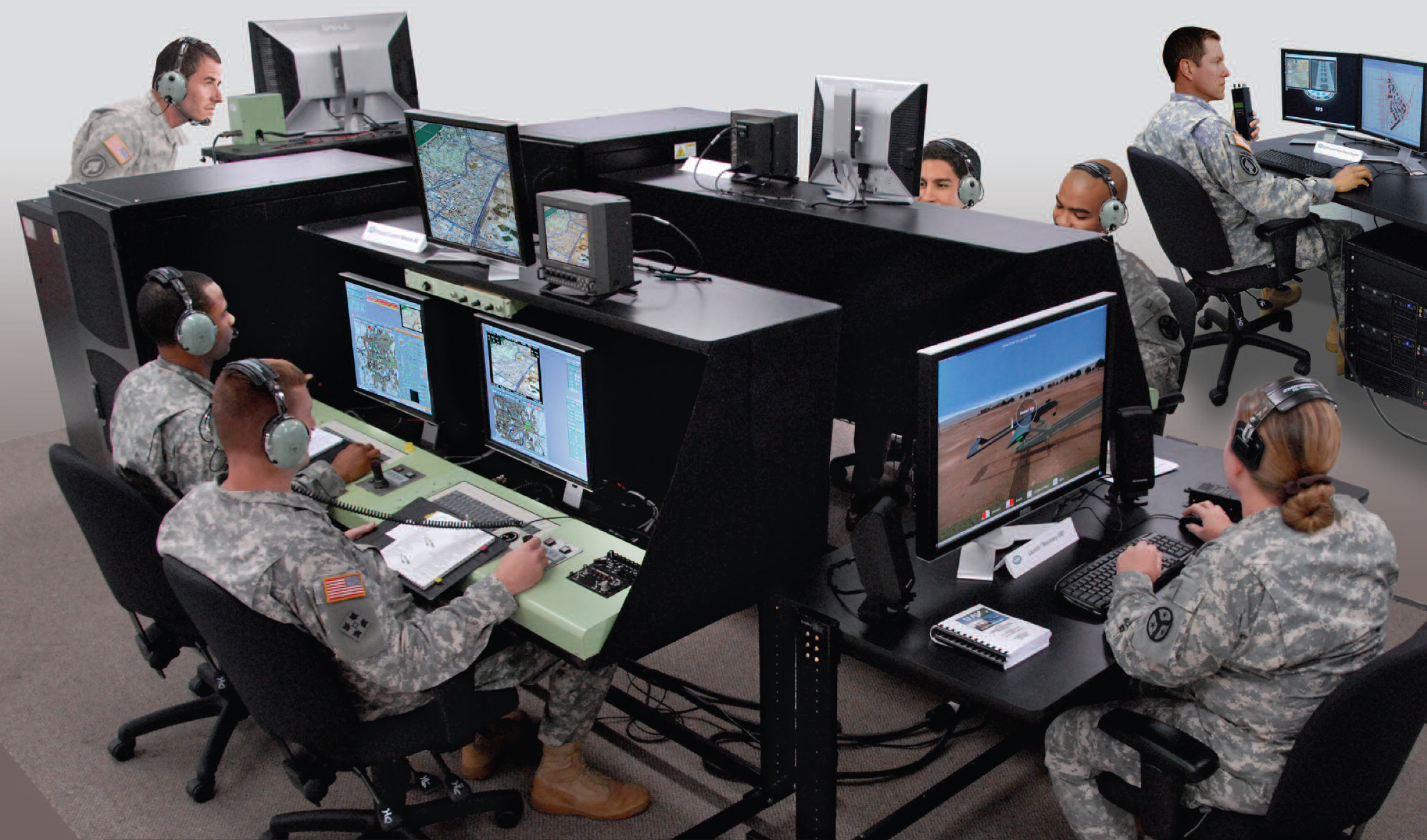
U.S. Army's Shadow Shadow Crew Trainer, part of U.S. Army TADSS desktop training suite with MVRsimulation visuals. (Photo courtesy of AAI/Textron.)
